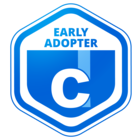Hello! We manage an open course library, in that any user on the system has access to all our courses (~250). We currently create user accounts manually or through self-registration, but we want to set up a subscription so other individuals can pay to access all courses. However, it seems that a course can only be included in the subscription if we select ‘the course is on sale in catalogs’. This then means our non-subscription users can’t access the course without paying.
Is my understanding correct? Is there any way to create a subscription without making changes to course accessibility for our non-subscription users? Thanks!









